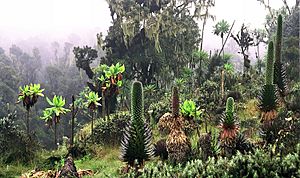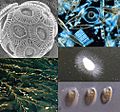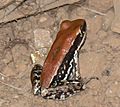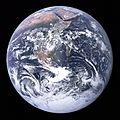Life facts for kids
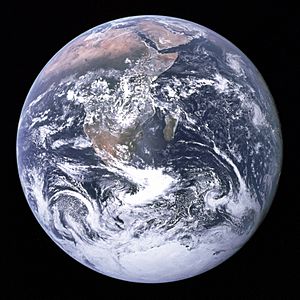
Life is what makes something a living thing, different from something that is dead. It's a way of being that includes growing, changing, and reproducing.
The word "life" can mean a living being, like an animal or a plant. It can also mean the time something is alive, from when it is born until it dies.
The study of life is called biology. People who study living things are called biologists. The average time a species lives is called its lifespan.
Most life on Earth gets its energy from the sun. The only known exceptions are tiny bacteria that live deep in the ocean. These bacteria get energy from chemicals around hot vents on the seafloor.
All life on Earth uses carbon and water. Living things are made of tiny parts called cells. These cells contain important molecules like proteins and nucleic acids, which are like instructions for life.
Contents
What Makes Something Alive?
Orange labels: known ice ages.
Also see: Human timeline and Nature timeline
Living things are like "open systems." This means they are always changing. They take in materials and information from their surroundings. They also release waste.
Living things do many special things:
- They use metabolism to turn food into energy.
- They keep their inside conditions stable (this is called homeostasis).
- They grow.
- They react to things around them (like light or touch).
- They reproduce, making new living things like themselves.
Over many generations, living things change to fit their environment better. This process is called natural selection. More complex living things can also communicate in different ways.
Many kinds of life are found on Earth. These include plants, animals, fungi, protists, archaea, and bacteria. All these living things share some common features. They are made of cells and use carbon and water. They also have complex ways of organizing themselves. Plus, they pass on genetic information to their young.
Life Beyond Earth?
Right now, Earth is the only planet we know a lot about. We don't know for sure if life exists anywhere else in the Universe. There have been some ideas about life on other planets, but none have been proven yet. Scientists are still looking for signs of life in space.
How Do We Define Life?
One important idea about life is called the cell theory. It has three main points:
- All living things are made of cells.
- The cell is the smallest living thing that can do everything needed for life.
- All cells come from cells that already exist.
People often say something is alive if it:
- Grows.
- Takes in food, uses it for energy, and gets rid of waste (this is metabolism).
- Moves (either by itself or has movement inside it).
- Reproduces (either with another living thing or by making copies of itself).
- Reacts to its surroundings.
- Functions (does what it's supposed to do).
However, not everything that is alive fits every point on this list. For example:
- Mules cannot have babies. Worker ants also cannot reproduce.
- Viruses are not active until they are inside a living cell. They don't do metabolism on their own.
Even so, mules and viruses are made of the same basic chemicals as other living things.
A Modern Idea of Life
In 1980, two scientists, Humberto Maturana and Francisco Varela, came up with a modern idea of life called autopoiesis. This idea says that living things:
- Make their own parts.
- Put these parts together correctly.
- Constantly fix and take care of themselves.
Basically, living things can make and keep themselves going. This idea uses modern science about molecules and systems.
Gallery of Life
-
An Adult citrus root weevil is an example of an insect
-
Salmonella typhimurium is an example of bacteria
-
Chromalveolates are a group of protista
-
Amanita muscaria (Fly agaric) is an example of fungi
-
Humans are an example of people
Related Topics
Images for kids
-
The structure of the souls of plants, animals, and humans, according to Aristotle
-
Deinococcus radiodurans is an extremophile that can resist extreme cold, dryness, vacuum, acid, and radiation.
See also
 In Spanish: Vida para niños
In Spanish: Vida para niños


